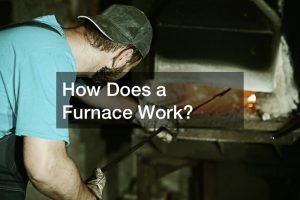In the video above, the fundamental operation of HVAC repair furnaces is explored, focusing on shared principles across different models. Furnaces, regardless of model variations, are measured in British Thermal Units, typically ranging from 40,000 to 130,000. Forced-air furnaces, with gas burners fueled by natural gas or propane, feature two airflow systems to efficiently warm spaces.
The first airflow system utilizes an inducer fan motor, drawing air into the burner assembly to warm the heat exchanger.
The second system involves a blower fan that circulates air through the return vent, past the heat exchanger, and out through the home’s venting. The thermostat plays a crucial role in temperature control, signaling the furnace to turn off when the room reaches the desired temperature.
Safety measures, including flame rollout limit switches and a safety limit switch, play a pivotal role in preventing issues like inadequate air circulation or overheating, ensuring the well-being of both the furnace and the household. Regular maintenance, such as checking and replacing furnace filters, is emphasized for efficient operation and to safeguard against potential hazards. The video also addresses potential noise concerns, offering insights into troubleshooting and solutions, contributing to a comprehensive understanding of furnace maintenance. Additionally, the video emphasizes the importance of installing carbon monoxide detectors near bedrooms, with regular battery checks, as a crucial safety measure.




